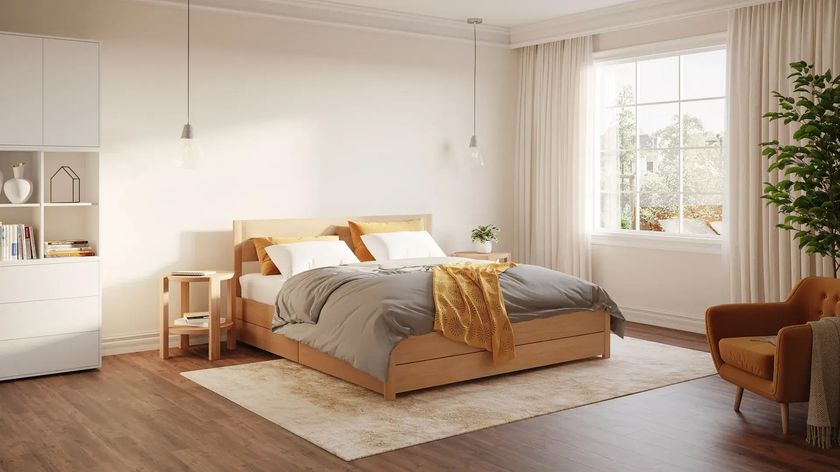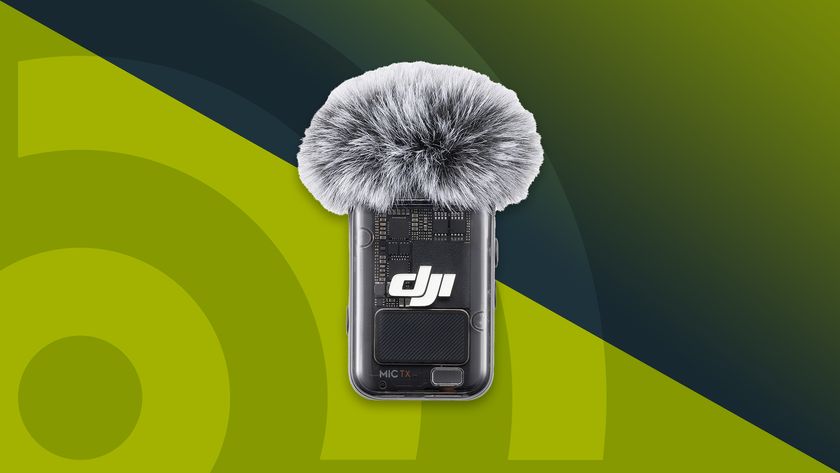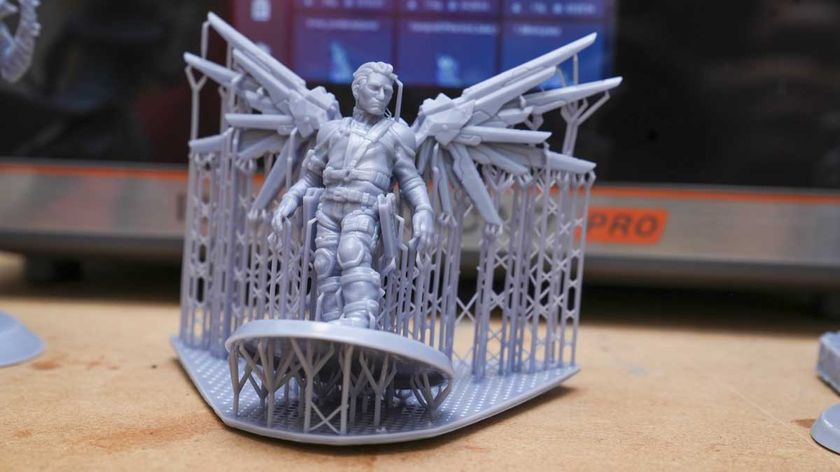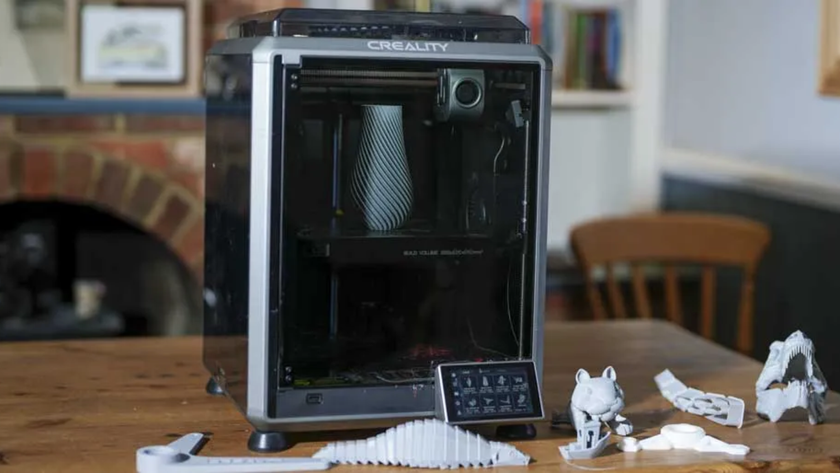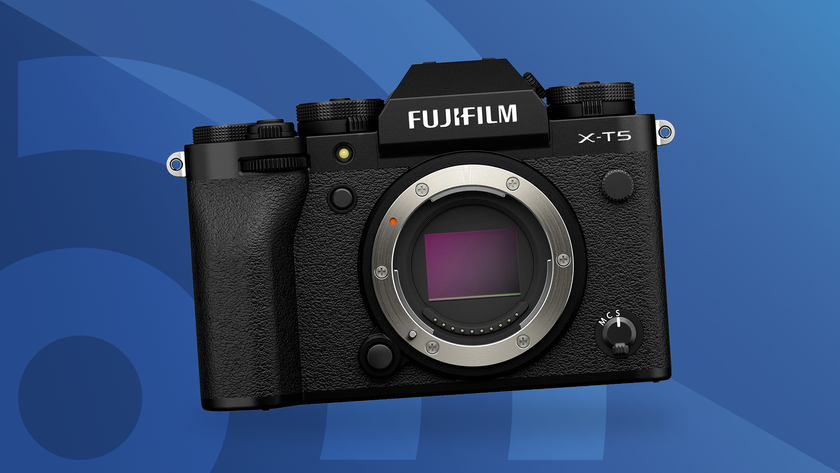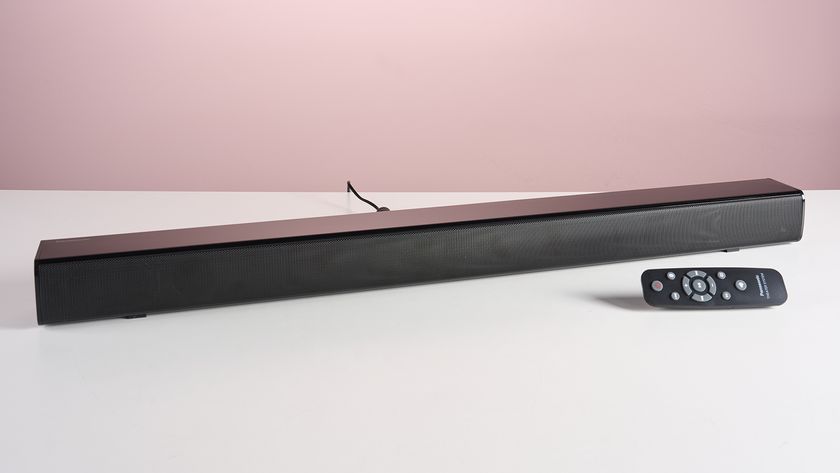The best mattress toppers 2025: affordable ways to upgrade your bed
Transform your bed with our expertly-curated topper selection
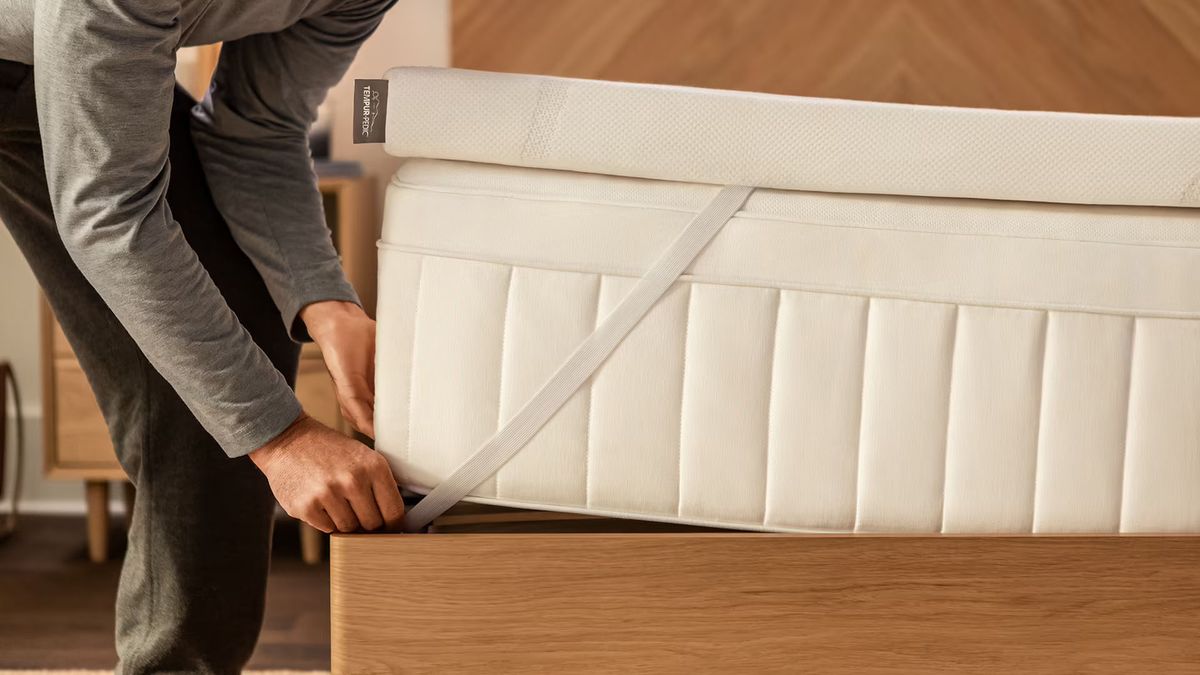
Buying one of the best mattress toppers can be the perfect solution if your bed isn't meeting your sleep needs, but you don't want to have to go to the trouble and expense of shopping for one of the best mattresses.
A quality mattress topper can make the world of difference to a bed that doesn't feel quite right to you. It can provide a firmer top layer for a mattress that's a bit too soft for your liking, or deliver a little sink-in comfort for when a firm bed isn't giving your joints the cushioning they need. And if your current mattress is past its prime but still in generally good condition, a good mattress topper can extend its life for a few more years.
Don't confuse mattress toppers with mattress protectors, which are much thinner and all about protecting your bed from stains and spills, or mattress pads; our mattress pad vs mattress topper guide can explain the differences on that front.
Below, we've gathered together a selection of the best mattress toppers available in both the US and UK, for a range of different budgets and needs. Read on to discover the best options available now.
The best mattress toppers 2025: as chosen by experts
Why you can trust TechRadar
Best mattress toppers: US
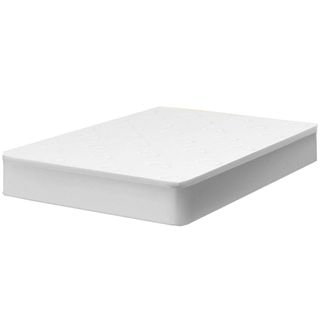
Material: Memory foam, bamboo rayon, polyester
Thickness: 2.5"
Trial: 101 nights
Warranty: Lifetime
Right now we rate the Puffy Deluxe Mattress Topper as the best mattress topper on the market; it comes in two firmness options and at 2.5 inches thick it won't mean you have to invest in new, deeper sheets. Our reviewer found that it gently cradled and conformed to her joints in all sleeping positions, but noted that because it's made with memory foam it has a sink-in feel that not everyone will get along with, and it sometimes traps heat, which is worth knowing about if you tend to sleep hot. It's hypoallergenic with a removable and washable cover, and it comes at a good price that's usually discounted.
Read more: Puffy Deluxe Mattress Topper review
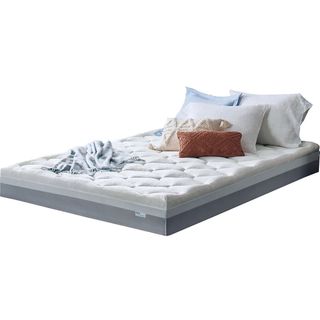
Material: Memory foam, fiber
Thickness: 4"
Trial: n/a
Warranty: 10 years
This Sleep Innovations mattress topper is comprised of a layer of gel-infused memory foam and a removable and washable pillow top with an elasticated skirt that anchors the whole thing securely in place on your mattress, giving you the body contouring support of memory foam and the hygiene benefits of a mattress protector, all in one. Our reviewer found it to be a versatile choice for a variety of sleep positions, but noted that its four-inch depth may necessitate extra-deep sheets. While this is billed as a cooling topper, we feel any actively cooling effects (although it didn't trap heat either).
Read more: Sleep Innovations Dual Layer Mattress Topper review
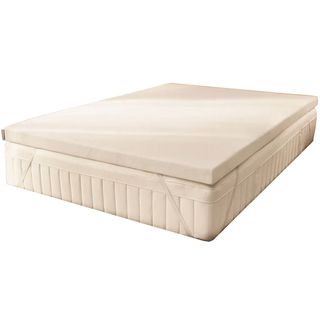
Material: Tempur material
Thickness: 3"
Trial: n/a
Warranty: 10 years
Tempur-Pedic's Tempur-Adapt mattress topper is an outstanding luxury option that's well worth paying extra for. This three-inch topper is made with Tempur's own TEMPUR material, which is more responsive and breathable than most memory foam. It's soft and supportive, making it great for side sleepers but also suitable for back and stomach sleeping; in our review, our tester found it supremely comfortable, but noted that it might be slightly too soft for some tastes. The washable cover is a bonus, and you get a 10-year warranty but no trial period, which is disappointing, considering the high price point.
Read more: Tempur-Adapt Mattress Topper review
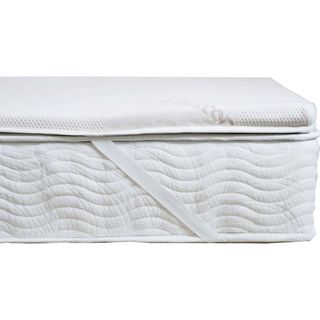
Material: High-density foam
Thickness: 1.5"
Trial: 180 nights
Warranty: 1 year
Saatva mattress toppers are a great way to get a taste of the feel of its luxury handcrafted mattresses. There are three options but we'd recommend the Memory Foam option, as it's the most affordable and contours extremely well to the body to provide superb support. Its high-density foam reduces motion transfer, making it a great choice for couples, and while it's only 1.5 inches tall, it's effective. In our review we found that it transformed a too-firm mattress into one that was a lot more comfortable for side sleeping. Bear in mind that you can only spot-clean this one as it's not machine-washable.
Read more: Saatva Foam Mattress Topper review
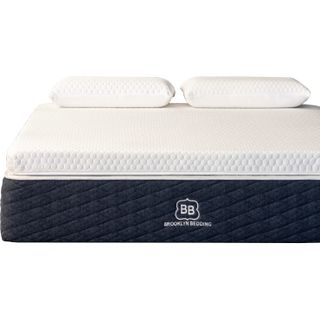
Material: Foam, micro coils
Thickness: 4"
Trial: 120 nights
Warranty: 3 years
Brooklyn Bedding's premium Microcoil Mattress Topper has something that you won't find in most toppers: a 0.75" layer of micro coils, designed to deliver extra contouring support and a tiny bit of bounce while increasing the topper's breathability. It's topped with a layer of plush, sag-resistant premium foam, while a bottom layer of high-density base foam adds durability and support. Finally there's a cool-to-the-touch cover to add to the topper's temperature-regulating qualities. There aren't many customer reviews but they're unanimously positive, praising the topper's comfort and support.
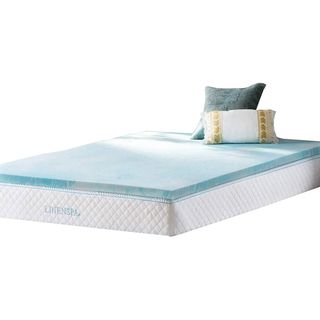
Material: Gel-infused memory foam
Thickness: 2"
Trial: n/a
Warranty: 3 years
With prices starting at just under $40, this LinenSpa opper is a great budget choice. It's two inches thick (a three-inch version is also available) and a cheap way to give older mattresses a boost. We haven't had a chance to test this one but the Amazon reviews are impressively positive. Its foam is gel-infused to help keep sleepers cool, but many reviews that say that it sleeps slightly warm; most of these customers still scored it highly, suggesting this isn't a deal-breaker. Its softer foam makes it a good choice for joint pain, and we think it's best suited to lighter builds and those who sleep on their sides.
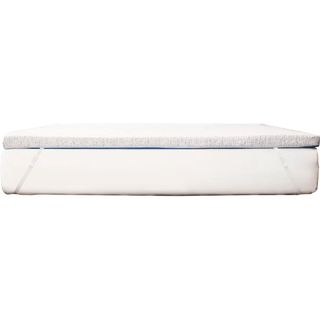
Material: Gel-infused memory foam
Thickness: 3" or 4"
Trial: n/a
Warranty: 5 years
The Viscosoft High Density topper is particularly suited for back sleepers, reducing pressure points, supporting the lumbar and keeping the spine in a neutral alignment. Many customers say that it helped ease their aches and pains and improved their sleep quality, but be aware it's still not a 'firm' option (probably not one for stomach sleepers). The cover's machine washable and the gel-infused foam is designed to optimize airflow and prevent overheating, although there are some reports it sleeps slightly warm. It also absorbs motion well, making this a good choice for those sleeping with a restless partner.
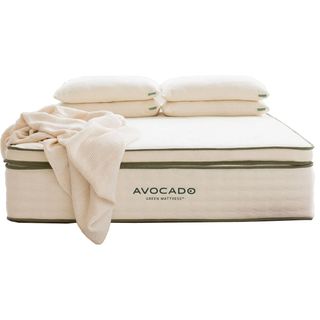
Material: Organic latex, wool and cotton
Thickness: 2.75"
Trial: 365 nights
Warranty: 10 years
The Avocado Organic Latex Mattress Topper is made with certified-organic materials and as mattress toppers go, it's pretty advanced. There are two sleep feels to choose from: Plush for a softer sleeping experience, or Firm for giving older, softer beds a bit more support and pressure relief. The presence of wool makes this topper an excellent choice for hot sleepers looking to make their bed cooler, and customer reviews agree, with many praising how well it regulates temperature. It's expensive, though; the biggest sizes cost more than a mid-range bed-in-a-box.
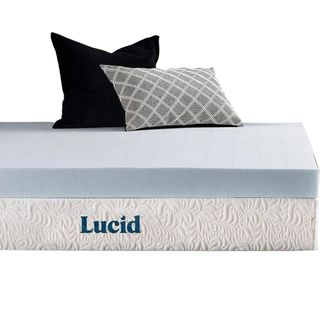
Material: Gel-infused memory foam
Thickness: 4"
Trial: n/a
Warranty: 3 years
Lucid’s four-inch mattress topper is a great mid-range memory foam option for those looking for cushioning comfort and softness. On Amazon it's rated 4.4 stars over around 30,000 reviews at time of writing, with many customers noting that it improved their sleep, although some complain that its too soft, and difficult to move around on. It's spot clean only, so we'd recommend adding a mattress protector for hygiene purposes; this will also help keep the topper in place, as it doesn't have any straps and just sits on top of your mattress (there is however the option to choose a version with a cover).
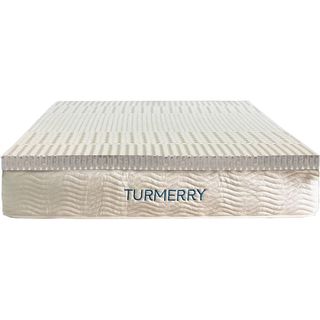
Material: Organic latex foam
Thickness: 2" or 3"
Trial: 60 nights
Warranty: 5 years
Turmerry’s Organic Latex Mattress Topper is the most customizable option on our list, with three firmness levels – soft, medium and firm – along with two thicknesses, so there are options for everyone from side sleepers through to back and stomach sleepers. There's no cover included as standard, but there is the option to add one at checkout. Latex toppers are great at providing pressure relief and support, and this one's excellent choice for anyone suffering with aches and pains. It's not as luxurious at the Avocado option higher up our best mattress topper list, but it's far more affordable.
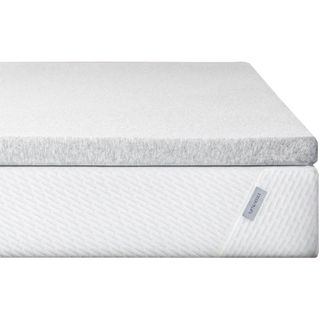
Material: Open cell foam
Thickness: 2"
Trial: 100 nights
Warranty: 3 years
The Tuft & Needle Mattress Topper is made from open cell foam, providing pressure relief and contouring for lighter and average weight sleepers, without the distinctive memory foam 'hug'. Back sleepers who suffer with back pain will find that this topper adds a little contouring at their lower back, which can help alleviate pain. It’s also a good choice for side sleepers looking to soften their mattress a little whilst still keeping them supported. At only two inches thick, the Tuft & Needle Mattress Topper isn’t going to drastically alter the feel of a mattress but it will add softness and cushioning to a firmer bed.
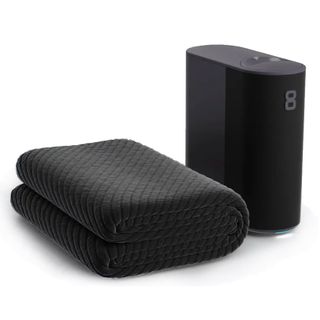
Material: Encasement, active grid, base unit
Thickness: Not stated
Trial: 30 nights
Warranty: 2 years
The Pod 3 Cover a high-end smart cover that pumps water to cool or warm your bed to a just-right feel, with a temperature range of 55°F up to a super-toasty 110°F. It also packs app-controlled sleep and health tracking features as well as an alarm that gently wakes you using vibration and a gradual temperature change. Our review found that it all works really well, however to enjoy its best features you'll need to pay a monthly subscription on top of the eye-watering price tag, but for that you'll get a bed that learns how you sleep and delivers the perfect temperature for you throughout the night.
Read more: Eight Sleep Pod 3 Cover review
Best mattress toppers: UK
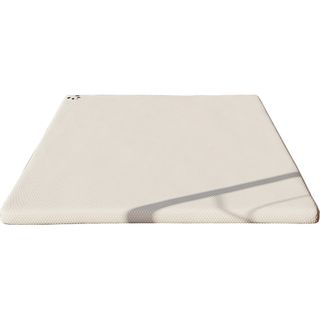
Material: Memory foam, bamboo, polyester
Thickness: 5cm
Trial: 30 nights
Warranty: 10 years
Panda's mattress topper is made with a single 5cm slab of memory foam inside a cover that's 40% bamboo and 60% polyester. It feels soft and supportive, but in our review we found that it's likely to feel too soft for some sleepers, particularly if you're not keen on the enveloping feel of memory foam. It does a decent job of regulating temperature due to its gel-infused open-cell foam, and it'll stay in place thanks to an anti-slip base plus adjustable straps at each corner. The 30-night trial's a little short, but the Panda topper comes with a generous 10-year warranty.
Read more: Panda Bamboo Mattress Topper review
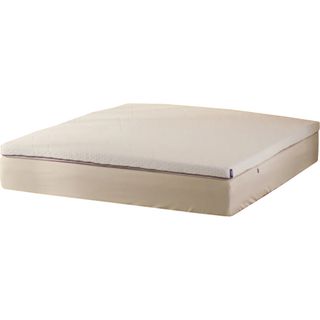
Material: Memory foam, other foam, polyester, elastane
Thickness: 9cm
Trial: 100 nights
Warranty: 10 years
If you want to give your mattress a luxurious upgrade (and you have extra-deep sheets), the Emma Premium Topper is 9cm of soft, squishy comfort. It's so soft, in fact, that many people are going to find it way too plush for comfort, particularly heavier back sleepers who need a bit of firm support for their spines. Lighter side sleepers are likely to find it a better fit, especially if their current mattress isn't providing enough cushioning for hips and shoulders. You'll get 100 nights to decide whether it's the right fit for you, and there's a 10-year warranty as well.
Read more: Emma Premium Topper review
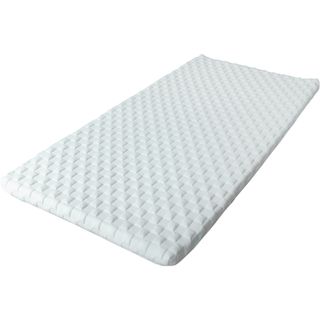
Material: Levitex foam, polyester
Thickness: 5cm
Trial: 44 nights
Warranty: 5 years
If your current mattress isn't quite packing enough support for your needs, the Levitex Gravity Defying mattress topper could be the solution you're after. It's an all-foam topper, but you won't get much of the sink-in feel you'd normally get from memory foam; this one instead delivers subtle contouring and has a firm but responsive feel. It won't work miracles – you can't put it on a medium-soft or soft bed to make it magically firmer – and it's not especially luxurious, but it'll provide consistent pressure relief in most sleep positions.
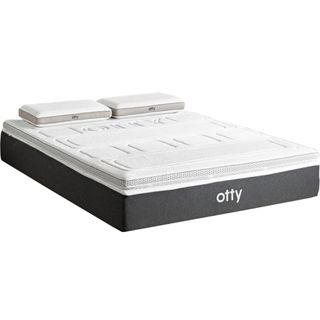
Material: Bamboo and charcoal infused memory foam
Thickness: 5cm
Trial: 14 nights
Warranty: 1 year
Like the Panda topper above, this topper from Otty is made using bamboo, which is actually infused into the memory foam along with charcoal. Otty says that the bamboo enhances the topper's breathability, helping keep things cool at night, while the charcoal absorbs moisture and eliminates odours so that the topper stays fresh and clean. Otty rates this topper as a medium 5.5 on the firmness scale, making this a good choice for taking the edge off a too-firm bed without making things too soft. The only downside: there's only a 14-night trial and 1-year warranty, which feels a little mean.
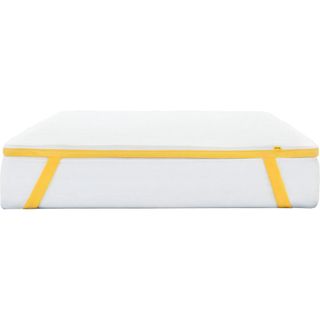
Material: Memory foam, other foam, polyester, polypropylene
Thickness: 5cm
Trial: 30 nights
Warranty: 2 years
Eve's mattress topper is a great choice if you want to give your bed a bit of a comfort boost but don't enjoy the feeling of sinking into memory foam. This one has a surprisingly firm feel to it, thanks to a 2cm layer of open cell memory foam that sits on top of a 3cm layer of sturdier base foam, making you feel beautifully supported without getting bogged down in foam. It regulates temperature well, too, and hefty straps ensure that this topper stays firmly in place every night. The top cover's washable at 40°C so that you can keep things fresh, and right now this topper's available with a 60% clearance discount.
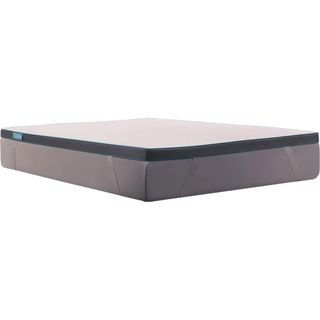
Material: Simbatex foam, base foam, micro coils
Thickness: 7cm
Trial: 200 nights
Warranty: 10 years
Want a mattress topper that has a bit of extra bounce and won't leave you sweating at night? Simba's Hybrid Topper could be what you're looking for; sandwiched between its top layer of open-cell Simbatex foam and its high-density base layer is a layer of 20mm micro springs that enhance airflow and provide the topper with a more responsive feel than you'll get from all-foam options. The top cover's removable and washable at 40°C, and the topper has both an anti-slip base and corners straps to hold it in place. You'll get an impressive 200 nights to trial it, too, as well as a 10-year warranty.
Why buy a mattress topper?
They may not look like much at first glance, but a good mattress topper can make an instant difference to your sleep comfort. They are often much, much cheaper than buying a new mattress, plus they couldn’t be easier to use. In most cases, you simply need to unseal them from their vacuum packed plastic covering, then pop them on top of your mattress to let them fully inflate. Some do so within minutes while others take hours – always follow the manufacturer’s instructions.
Other benefits of a mattress topper include:
- Increased comfort or softness for firmer beds
- Increased firmness and support for softer beds
- They help extend the lifespan of a middle-age mattress
- They help you break in a new mattress
- They quickly boost the comfort of a guest bed
- Most toppers can also be used on sleeper sofas
There are plenty of reasons to buy a mattress topper, especially if the comfort and support of your existing bed isn’t quite right for your body or sleeping position. Tell-tale signs include pressure point pain (hips, shoulders, back), or if you’re waking up feeling stiff, sore and bent out of shape. Let’s discuss this further in our next Q&A…
Are mattress toppers worth it?
The answer to this question depends on the age and state of your current mattress. If it’s more than six years old, then a good mattress topper could boost its comfort or support in the final year or two of its life until you have the budget to buy a new bed. But if it’s older, and providing you don’t have a luxury natural mattress with a longer lifespan, then it’s unlikely to be giving you the spinal support and pressure relief you need. Therefore, a mattress topper won’t cut it – you need a new mattress.
Not even the best mattress topper can save a sagging bed either. However, there are definitely instances where mattress toppers are worth it and then some. For example, if you have a new mattress that’s still too firm for your body and sleep style, then the right mattress topper can add lashings of extra comfort while you break in your new bed.
If you enjoy the feeling of being hugged during sleep, a memory foam topper is your best bet. These contour the body and dish out maximum pressure relief, easing sore joints that are otherwise aggravated when you lie down. Tempur-Pedic has its own NASA-developed material called Tempur, and this is widely recognized as one of the best for easing sore joints and reducing pressure on impact points (hips, back, etc).
Mattress toppers are also worth it if you want to make a soft mattress firmer. You’ll need a thicker bed topper for this job, and ideally one made from latex or an equally firmer material. But remember, if your bed is sagging, a topper won’t save it.
A good mattress topper can also make a world of difference to the comfort of your sleeper sofa, especially if yours is flimsy. Just check the weight capacity of your sleeper sofa and the dimensions of the mattress area before you buy a new topper for it.
What is the best type of mattress topper?
Bed toppers are a surprisingly diverse product, with different materials and feels coming into play depending on the type of topper you buy. To help you figure out the best solution for your sleep, here we look at the four main types of mattress toppers and the benefits and drawbacks of each.
The four main different types of mattress topper are:
- Memory foam mattress toppers
- Feather and down mattress toppers
- Microfibre mattress toppers
- Latex mattress toppers
Each type of bed topper feels different when you lie down on it. Down toppers, for example, feel luxuriously plush and cosy; we’re talking proper hotel levels of comfort and luxury here. Memory foam mattress toppers, on the other hand, contour to your body for deep pressure relief. Here’s what you need to know about each type…
Memory foam mattress toppers
Memory foam is designed to react to your body heat, then contour to your unique curves. Many sleepers find that this helps relieve sore joints, and that has certainly been our experience.
Memory foam toppers absorb the motion of you and your partner moving about in bed, so you won’t disturb each other so much if either one of you is restless.
The downsides of all-foam mattress toppers is that they can trap heat and some people, especially hot sleepers, find them too warm to sleep on. However you can buy mattress toppers with cooling gels infused into them to help dissipate heat so that it doesn’t build up.
Feather and down mattress toppers
Depending on the fill power and quality, natural mattress toppers can be more expensive than memory foam pads. These are a much more traditional design of mattress topper so they were very popular several years ago, but there are some big drawbacks to these…
Firstly, they need regular fluffing to retain their original shape as they tend to flatten out over time. It’s the same situation with down or feather-filled pillows. Also, not all down toppers state where the down or feathers have come from, so we strongly suggest that you only consider those made with ethically sourced materials.
It isn’t all bad news though – feather and down mattress toppers don’t retain as much heat as other types of topper, making them a good choice for hot sleepers. They also won’t create a sinking-in feeling like memory foam, so you’ll be able to get in and out of bed more easily.
Microfibre mattress toppers
These are by far the cheapest type of mattress topper you’ll come across. They are usually odor-less and are mostly hypoallergenic, making them suitable for people with common allergies. Anti-allergy toppers are treated with chemicals to ward off allergens like dust mites and pollen.
Microfibre is a synthetic material widely used in budget pillows and duvets, so a microfibre mattress topper should be on your list if you have a very small budget.
The downside is that they can develop lumps over time, regardless of how often you shake them out. This is especially true if you machine wash and dry them. Microfibre mattress toppers have a very short shelf life too, so they aren’t good for the planet. But if you’re just looking to boost the comfort of a guest bedroom that gets occasional use, you should be fine with one of these.
Latex mattress toppers
Latex is a natural material used in organic mattresses and other natural sleep products, so latex mattress toppers are very popular among people who want to create a non-toxic sleeping environment.
Latex is also naturally antimicrobial and non-allergenic to most people except those with a latex allergy. They can be a little smelly at first though, much like memory foam bed toppers.
And also like foam, latex has a body contouring property but it can be much firmer, meaning it’s the best choice for making a soft mattress firmer.
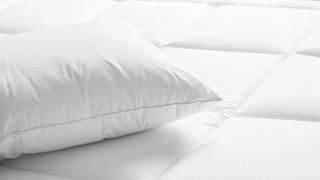
Mattress topper vs new mattress: which do you need?
How do you decide if a mattress topper will be enough to help you or if you need to bite the bullet and buy a new mattress? Here we cover some common scenarios to help you decide...
My mattress is too firm: If you’re finding your mattress too firm and unyielding, a mattress topper could be a great choice with just enough cushioning to help you sink into your bed a little better.
My mattress is too hot: A mattress topper infused with gel or other cooling materials should be enough to cool all those except the hottest sleepers down.
My mattress is sagging: In this situation there really is no option but to go out and replace your mattress. Even the thickest mattress topper will still sink into the saggy parts of your mattress and you’ll be no better off sleep-wise.
My mattress is over eight years old and uncomfortable: Again, no mattress topper can revitalize an old mattress that’s lost its spring and shape. If this is your situation, it’s time for a new mattress.
Toppers aren't to be confused with thinner pads or protectors either. For more guidance, see our mattress protector vs mattress pad comparison. A mattress pad is essentially much thinner and sits somewhere between a topper and a protector, and offers a little extra comfort (but not as much as a bed topper) and a degree of protection (though not as much as a proper mattress protector).
How to choose the best mattress topper
Like choosing a new mattress, finding the best mattress topper for your needs can be daunting. Let’s break things down to help you choose. Firstly, think about the material the topper is made from.
Memory foam mattress toppers are an ideal choice for those looking to reduce pressure on joints or motion transfer, but it can run very hot and make it difficult to shift in bed. Feather and down toppers don’t retain heat and promote movement but compress over time and aren’t hypoallergenic.
Microfiber and hollowfiber mattress toppers are the cheapest options, providing good softness but can become lumpy and flattened over time. Lastly Latex mattress toppers are incredibly durable and bouncy but can be too firm for some sleepers.
As well as the materials used, you should consider the depth of the bed topper and whether it will provide enough support for your needs. Check how easy it is to clean – if it’s going to be directly under your sheets it will get dirty, so consider covering it with one of the best mattress protectors too.
Finally, look for a mattress topper that attaches securely to your mattress so that you don’t slide about during the night – either with straps and a slip resistant mesh, or as a fitted sheet style topper.
Get daily insight, inspiration and deals in your inbox
Sign up for breaking news, reviews, opinion, top tech deals, and more.
Jo Plumridge is a freelance writer and photographer with over 20 years of experience writing for a variety of magazines, books and websites. She writes, perhaps unsurprisingly, about photography but also extensively on all things sleep and interior design related, alongside home and tech product reviews. She’s lived in the middle of a nature reserve in Botswana and written a guidebook to New Zealand, but now spends a lot of time trying to photograph the cats she and her husband foster for a local charity - without a doubt the most challenging subjects on earth!
- Jim McCauley
- Ruth HamiltonHomes Editor


